Unmanned Maritime Systems Development Accelerates
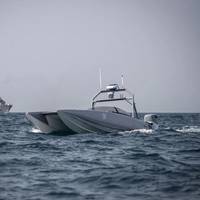
There is little question that world militaries see the value of unmanned systems to complement their manned counterparts. The wars in Iraq and Afghanistan accelerated the development of unmanned aerial systems and unmanned ground systems to meet urgent operational needs. Now, there is increasing interest in unmanned surface systems, resulting in their placement on an accelerated development path.Like their air and ground counterparts, these unmanned surface systems are valued because of their ability to reduce the risk to human life in high threat areas…
U.S. Navy: Unmanned Maritime Systems Development Accelerates
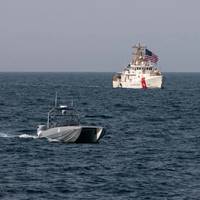
There is little question that world militaries see the value of unmanned systems to complement their manned counterparts. The wars in Iraq and Afghanistan accelerated the development of unmanned aerial systems and unmanned ground systems to meet urgent operational needs. Now, there is increasing interest in unmanned surface systems, resulting in their placement on an accelerated development path.Like their air and ground counterparts, these unmanned surface systems are valued because of their ability to reduce the risk to human life in high threat areas…
NASA, US Navy Practice Spacecraft Recovery at Sea
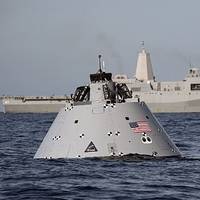
A joint team of NASA and U.S. Navy personnel are testing new equipment and practicing procedures for recovering astronauts that have splashed down in the ocean upon returning from space travel. NASA’s deep space exploration systems will send a crew through space at 25,000 miles per hour, travelling some 40,000 miles beyond the Moon before coming back home. When returning to Earth, the Orion spacecraft will slow to a mere 300 mph as it passes through the Earth’s atmosphere, eventually slowing to 20 mph before it safely splashing down in the Pacific.
USN's MUOS-5 Satellite Reaches Orbit
The Navy's fifth Mobile User Objective System (MUOS) satellite has reached operational orbit and has successfully deployed its arrays and antennas. On Oct. 22, the MUOS team raised the MUOS-5 satellite to an operationally-suitable orbit. The team completed a series of deployments of the satellite's solar arrays and antennas, with the last occurring successfully Oct. 30. MUOS-5 launched June 24 from Cape Canaveral Air Force Station and experienced a failure of its orbit raising propulsion system that halted the satellite's transfer orbit maneuver to its geosynchronous test orbit. The MUOS team ensured the satellite remained stable, safe, and under positive control while it investigated the issue and examined options.
Driving Innovation: the Unmanned FLNG
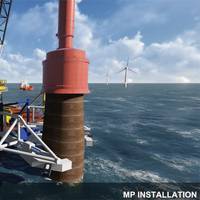
DNV GL developed a new unmanned floating LNG concept that it claims overcomes many of the challenges faced by operators looking to unlock the potential of remote offshore gas fields. Called Solitude, DNV GL said the concept demonstrates how technological advances can be combined into a solution that offers an estimated 20% reduction in annual OPEX, only adding a few percent increase in CAPEX and at the same time increasing overall safety. Foreseeing the need for more remote projects to be able to overcome even more challenging cost barriers…
Unmanned Systems Work Together from Single Controller
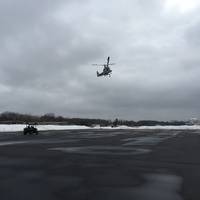
A flight demonstration using a hand-held tablet has shown how unmanned air and ground vehicles can be supervised together by a single operator, and how big and small businesses can work together. The demonstration was conducted on March 26, 2014, at Kaman Aerospace in Bloomfield, Conn., involving a Kaman K-MAX helicopter equipped with Lockheed Martin’s mission management system operating in the unmanned mode, and a Neya Systems UxInterceptor unmanned all-terrain vehicle. During the medical casualty response and resupply scenario…
TE Connectivity Debuts INSTALITE Boots
TE Connectivity (TE) announced its new INSTALITE Molded Boots that are up to 30 percent lighter than TE standard -25 boots. These high-performance heat-shrink boots have been designed for applications in military ground systems, aerospace and marine. Their optimized interior geometry reduces installation time as well as provides a faster recovery, the manufacturer said. "Our customers want to improve fuel efficiency and reduce their impact on the environment while at the same time carrying loads and passengers and optimizing performance,” said John Kuster, Senior Product Manager, Global Aerospace, Defense & Marine, TE Connectivity. As a low-weight sealed harness solution, TE’s INSTALITE boots are extremely rugged, resisting most common military fuels, oils and greases.
Northrop Grumman Present at Upcoming DSEI London Expo
Northrop Grumman Corporation will highlight its capabilities in command, control, communications, computers, intelligence (C4I), border security, unmanned ground systems, cyber security as well as navigation and maritime systems at the Defence & Security Equipment International (DSEI) exhibition in London. DSEI is the world's largest fully integrated defence and security event specialising in air, naval, land and unmanned systems and brings together international exhibitors from more than 50 countries. The exhibition takes place at ExCel in London from 10– 13 Sept. 2013. Northrop Grumman will be exhibiting in the South Hall at stand number S5-310.
Canadian Radar Satellite Contract for MDA
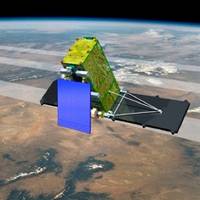
MacDonald, Dettwiler & Associates Ltd. win Canadian Space Agency $706 million contract to build, launch & provide initial operations for the RADARSAT Constellation Mission (RCM). The RCM is designed for three main uses: maritime surveillance (ice, wind, oil pollution and ship monitoring); disaster management (mitigation, warning, response and recovery) and ecosystem monitoring (forestry, agriculture, wetlands and coastal change monitoring). The contract is expected to extend over a period of seven years and brings MDA’s current backlog to approximately $2.9 billion.
Cavotec Acquires Combibox Systems
Sweden's Cavotec Group strengthens customer base with acquisition of ground support equipment manufacturer Combibox, also of Sweden. Cavotec explains their success at generating added value for customers and the Group by applying technologies perfected for airports to port applications for ships: an approach Combibox has also adopted. “With more than 30 years of experience in the airports industry, Combibox is extremely well-established; it has an outstanding customer base with product references all around the world. This will enable the Group to further improve its offering and expand into new markets,” explains Cavotec CEO Ottonel Popesco.
Alion Awarded $4.4m NOAA Contract
The National Oceanic and Atmospheric Administration’s (NOAA’s) collection, analysis and dissemination of ecosystem information on the Earth’s atmosphere, oceans and seas, and land-masses is critical to public safety, protection of property, and the economic health and development of communities in the United States and globally. Under a contract valued at $4.4m, employee-owned technology solutions provider Alion Science and Technology will perform a wide range of radio frequency (RF) spectrum services for the NOAA National Environmental Satellite, Data and Information Service (NESDIS) Office of Radio Frequency Management (ORFM) that will help to ensure environmental data can be gathered and transmitted via satellite.
BAE Systems Land & Armaments Lands $44.3M Contract
BAE Systems Land & Armaments, LP, Ground Systems Division, York, Pa., is being awarded $44,339,800 for firm fixed priced delivery order #0004 under previously awarded contract for the purchase of 89 Mine Resistant Ambush Protected (MRAP) vehicle Category I United States Special Operations Command Variants and vehicle sustainment Integrated Logistic Support. Work will be performed in York, Pa., and is expected to be completed by March 2008. Contract funds will not expire by the end of the current fiscal year. This contract was competitively procured. The Marine Corps Systems Command, Quantico, Va., is the contracting activity.
BAE Systems Land & Armaments Wins $278.4M Contract
BAE Systems Land & Armaments, LP, Ground Systems Division, York, Pa., is being awarded $278,441,800 firm fixed priced delivery order #0005 under previously awarded contract for the purchase of 399 Mine Resistant Ambush Protected (MRAP) Category II vehicles and 112 MRAP Category II Ambulance Variant vehicles. Work will be performed in York, Pa., and work is expected to be completed by April 2008. Contract funds will not expire by the end of the current fiscal year. This contract was competitively procured. The Marine Corps Systems Command, Quantico, Va., is the contracting activity.
Coast Guard Looks To Space For Maritime Awareness
The U.S. Coast Guard announced its intention to explore increased use of space as a tool to enhance awareness of activities in ports, coastal waters and their approaches. The Coast Guard has been studying the feasibility of receiving maritime automatic identification system (AIS) signals from space since 2001. In May 2004 the Coast Guard contracted with ORBCOMM, a satellite data communications company, to develop and build the capability to receive process and forward AIS signals from space via an AIS receiver onboard a communications satellite. In addition, ORBCOMM will provide the ground systems capable of processing the AIS signals and relaying the collected messages to the Coast Guard.












